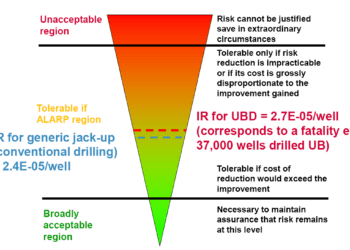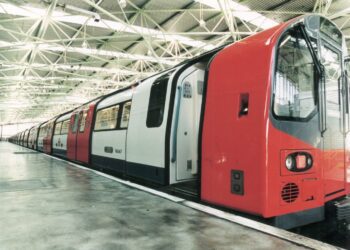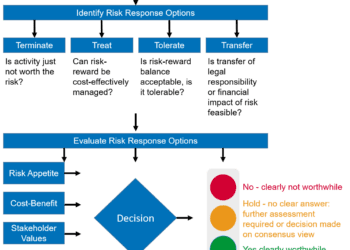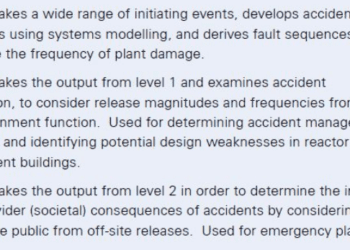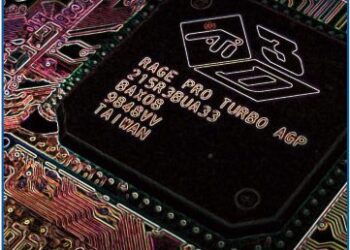Introduction to QRA
Risk is defined as the combination of the probability of an event and the consequences of the event, but how do you go about undertaking a full Quantitative Risk Assessment (QRA) for an offshore oil and gas facility or an onshore petrochemical plant?
QRA is usually justified where there is:
- major personnel or environmental hazard potential or
- significant economic implications or
- a variety of risk trade-off decisions that need to be made
WHAT IS QRA?
QRA is a technique used to systematically calculate the risks from hazardous events. It involves predicting the size of consequences associated with a hazard, and the frequency at which a release of the hazard may be expected to occur. These aspects are then combined in order to obtain numerical values for risk – usually risk of fatality.
QRA includes consideration of all identified hazardous events in order to quantify the overall risk levels. Similar hazardous events are often grouped and assessed together as bounding or representative events.
An array of third-party software packages exists for carrying out consequence modelling, frequency assessment or entire QRAs, but many of these calculations are also often done using spreadsheets.
QRA PROCESS
The main steps involved in a typical QRA study are shown in Figure 1. This also indicates how the outputs of each part feed into the next step of the process.

1. Identification of QRA scenarios
Hazards present on a facility will have been identified in a hazard study (e.g. HAZID) and the results are used as the starting point to identify the scenarios to include in the QRA. The hazard study will usually have ranked qualitatively the expected frequency and likely consequences of the identified hazards so that the QRA can focus on the significant hazards only.
All parts of the plant that contain a hazardous material (either toxic, flammable or both) should be included in the QRA. This could result in hundreds of different scenarios, so to simplify the analysis, the facility is split into sections (sometimes called isolatable sections) that contain similar materials under similar process conditions such as pressure and temperature.
2. Frequency assessment
To calculate the frequency of releases from an isolatable section involves counting the equipment items in each section (as shown on the P&ID) and multiplying by equipment release frequencies from published databases. A range of hole sizes is required to obtain a spread of results and provide a realistic representation of the range of release sizes that could occur.
The many possible sequences that may result from these loss of containment releases are developed using event tree analysis, which considers probabilities for ignition and failure of protection systems.
The frequencies of non-process hazards such as ship collision or dropped objects are usually derived directly from incident data or using fault tree analysis.
3. Consequence assessment
A variety of models are available to estimate the consequences of the resulting fires, gas dispersion, explosions, etc. The vulnerability of people to these physical effects is determined in terms of probability of fatality using appropriate criteria. The consequence assessment will also identify potential escalation scenarios that may lead to further significant consequences.
A QRA may also consider the impact on the asset itself, the environment and the reputation of the company.
4. Risk analysis
The consequences and frequencies are then combined in an integrated QRA model to give numerical risk values. Offshore QRA is usually conducted using spreadsheets whereas onshore QRA is typically done with commercially available software.
Other non-process hazards also need to be analysed, such as personnel transport, occupational hazards, ship collision, aircraft impact and natural hazards. Each has its own specialist method for risk analysis.
The calculated risk values are summed for all possible outcomes and expressed in the required form.Offshore risk is usually expressed in terms of Individual Risk Per Annum (IRPA) and Potential Loss of Life (PLL), whereas onshore risk will typically calculate Location-Specific Individual Risk (LSIR) and FN-curves for societal risk considerations as well as IRPA.
5. Risk evaluation
The significance of the calculated risk levels is evaluated by comparing them with country and company risk acceptance criteria. The most significant contributors to the total risk are also identified to enable improvement measures to be targeted at those factors where the greatest risk reduction is likely to be gained.
Cost-Benefit Analysis (CBA) is a complementary tool to QRA and may be used to rank risk reduction options in order of cost-effectiveness.
QRAs have many sources of uncertainty, whether in the data, methods or assumptions, and these need to be understood through a targeted study that can inform the interpretation of the QRA results.
CONCLUSION
QRA is an established approach to understanding the risk levels associated with the operation of hazardous facilities and for providing insights into the main risk contributors and opportunities for risk reduction.

